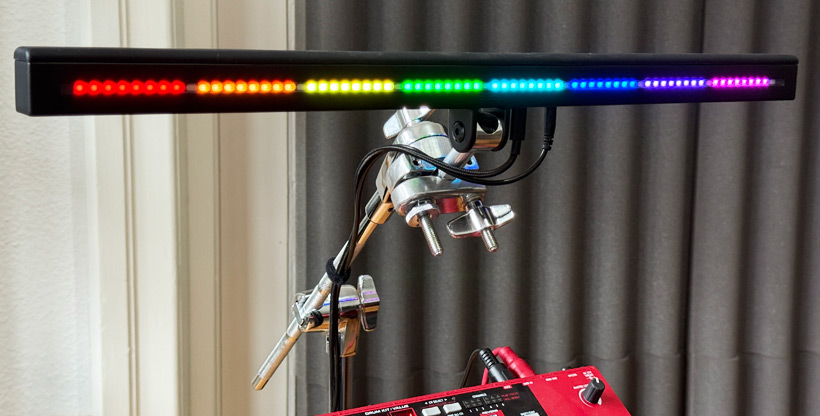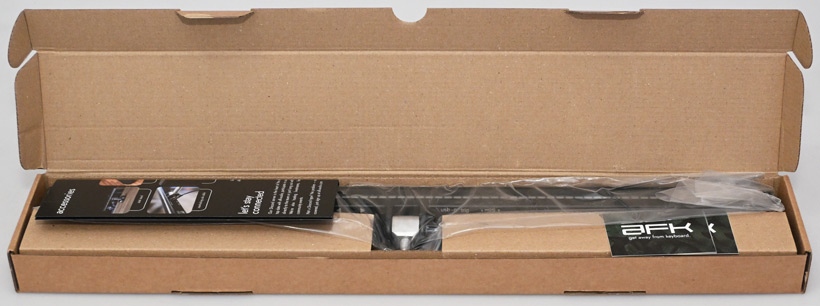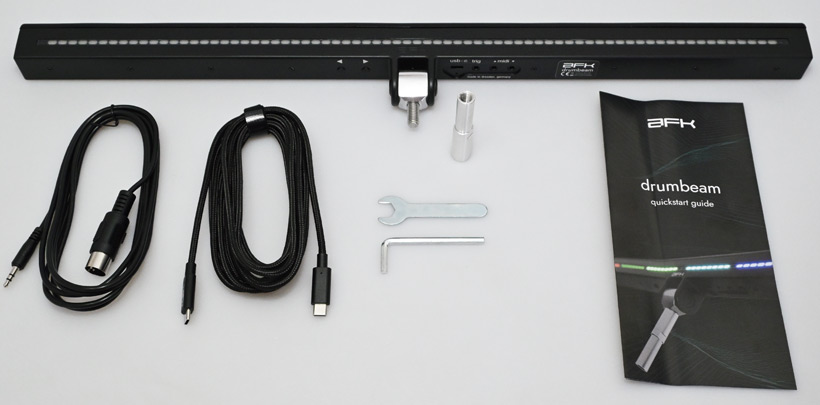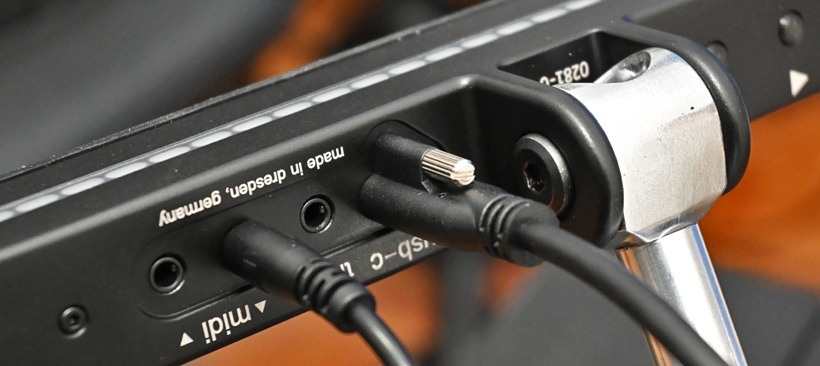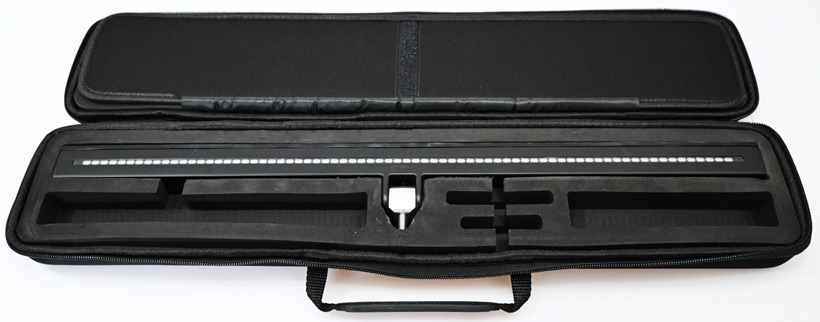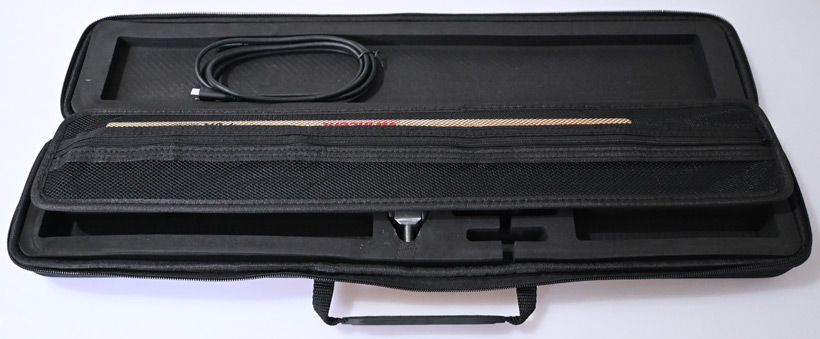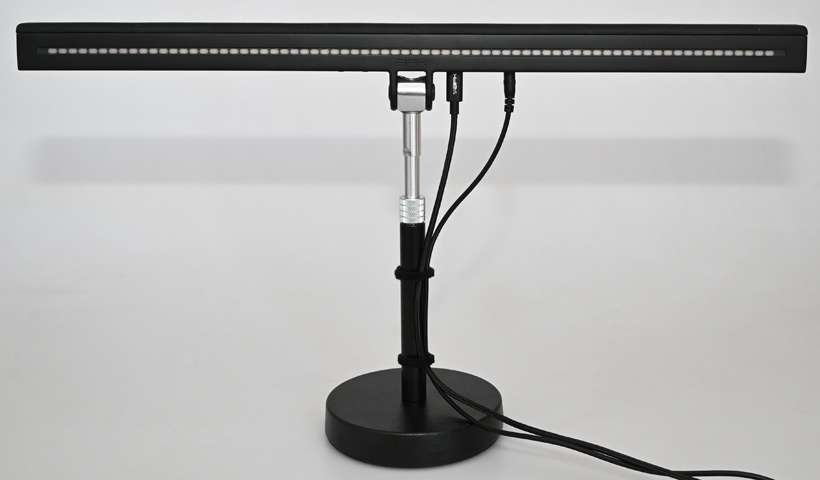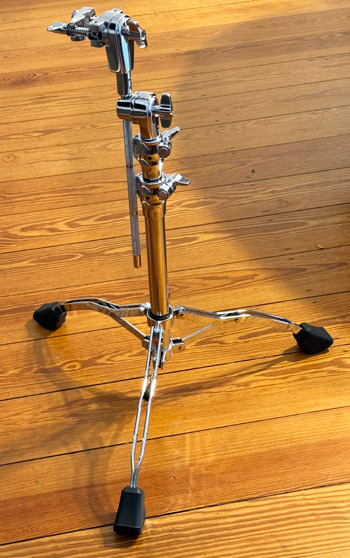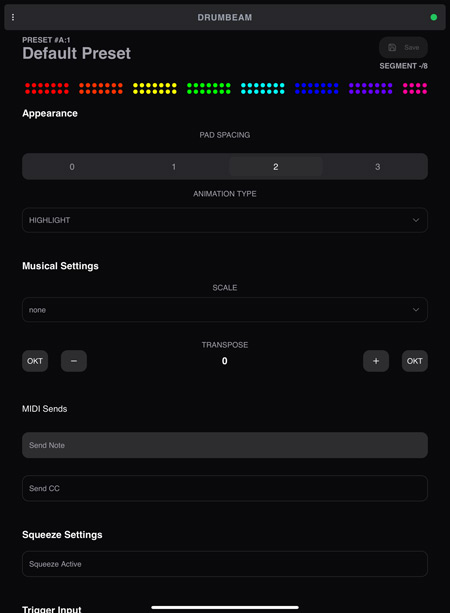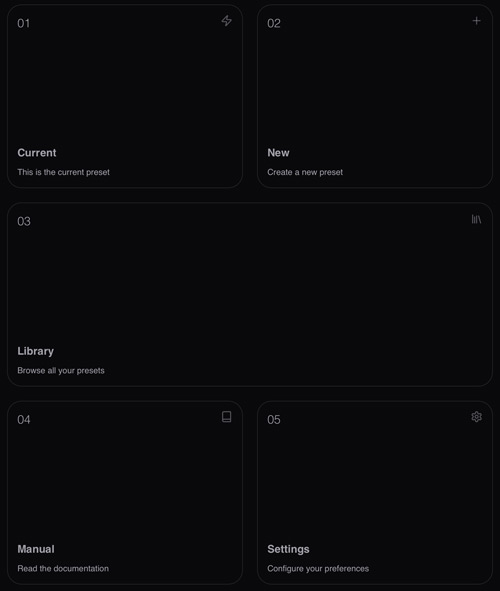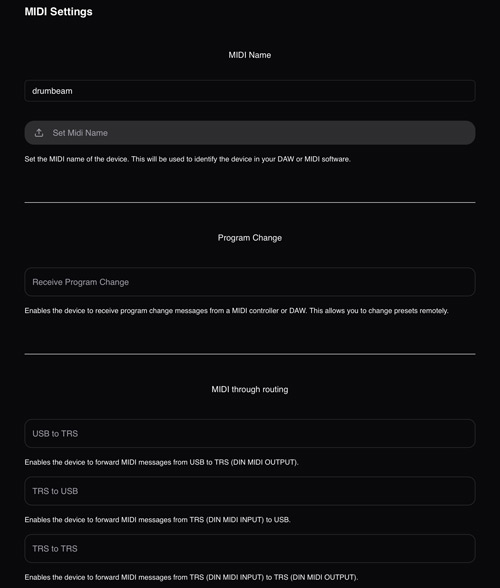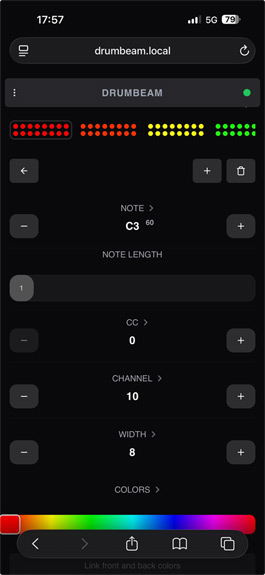afk-audio Drumbeam
MIDI controller not only for drums and percussion
Author and photos: Peter Kaminski
Electronic drums can come in many different forms: for example, as a practice set or as an addition to conventional percussion instruments in the form of pads. The pads usually also offer integrated sound generation. The Drumbeam from the young company afk-audio in Dresden takes a different approach. It is a pure MIDI controller without sound generation, but it has a very modern conceptual approach in terms of form, operation, and playing the drums. I first became aware of the instrument at Superbooth 2023. At the end of 2024, a successful crowdfunding campaign was launched on Kickstarter. The product has been available for purchase since summer of 2025. It is not only interesting for drummers but also for a much wider range of users, which is why we would like to present and evaluate the instrument in more detail here on our platform.
Concept and technology
One major difference to other MIDI drum controllers is its shape. Drumbeam is housed in a slim aluminum casing (520 x 24 x 32mm, approx. 800 grams). The top features a silicone surface with sensors underneath. The number, width, and distance between the striking surfaces can be adjusted. The areas are marked with RGB LEDs, the colors of which can be customized. This provides a very good visual overview of the current configuration. Up to 18 segments can be defined in theory.
Now let's move on to the connections. At the bottom is a USB-C port for a power supply (at least 0.4 amps) and for future firmware updates. The 3.5mm trigger jack can be used to connect an external piezo sensor, which can be used to trigger a kick drum via a foot pedal. This input is optimized for Roland KT models. There is also a MIDI input and output in the form of 3.5mm TRS jacks with A-type format assignment. Two buttons allow you to select eight presets from the current preset bank.
Scope of delivery
The Drumbeam comes with a quick start guide, a USB-C cable, a TRS Type A to DIN jack MIDI cable, and an adapter for mounting on a drum stand with the appropriate tools.
A power supply is not included in the scope of delivery, which makes sense, as many people are likely to already have a suitable power supply.
Accessories
afk audio offers a whole range of useful accessories for the Drumbeam, such as the drum stand mentioned above and an additional clamp.
The lockable USB-C cable (see image above) is a must-have for live applications.
A bag with a carrying handle is also available.
The Drumbeam and accessories can be transported safely in this bag.
The really practical transport bag is in two parts and there is space in the rear section for drumsticks and cables, for example.
Mounting
afk audio now also offers a matching table stand, a drum stand, and a rim clamp in its shop. However, many other stand models also work.
The Drumbeam can be attached to any microphone stand with a suitable 3/8" to M8 thread adapter. One such adapter is the König & Meyer 21918. The stand used on the picture at the top is a König & Meyer 232 microphone table stand mounted with this adapter.
When using a taller stand, it is recommended to use a drum stand instead of a microphone stand, such as the Tama HPS80W Electronic Pad Stand, which can be seen on the image above and also in the first photo of the test. It is very stable. However, many other drum stands, such as cymbal stands, which can be used with or without a boom arm, are also suitable by mounting the Drumbeam directly on the stand.
Operation
The Drumbeam's operation is an interesting solution, as it is essentially controlled via a connected Wi-Fi-enabled device such as a cell phone or tablet. The Drumbeam offers its own Wi-Fi access point with the SSID “drumbeam” and the password “supersafe.” Once you have established a connection to the Wi-Fi network, you need to open a web browser and enter “drumbeam.local” in the URL field. You will then have access to the controls via a web server integrated into the Drumbeam – without the need for an app. The following screenshots were taken on an Apple iPad using Safari as the browser. However, any other modern browser will also work.
After connecting to the Wi-Fi, you will be taken to a page with global settings (see image above). Here you can set, for example, whether MIDI notes or CC should be transmitted. You can also set how the LEDs work. The default LED mode is that the segments shine continuously and then shine brighter when a beat is triggered.
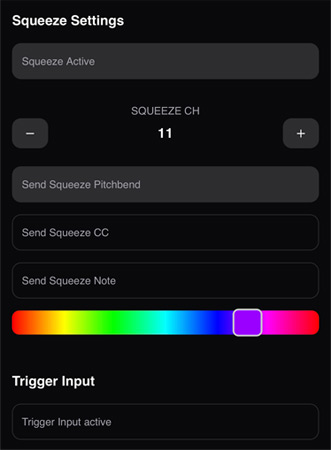
Particularly noteworthy is the optional “Squeeze” function, which allows Drumbeam to be controlled by hand. This also allows CC data or pitch bend data to be sent. When this function is activated, the area changes color when you place your finger on it. The color of the LEDs can also be set separately for this case.
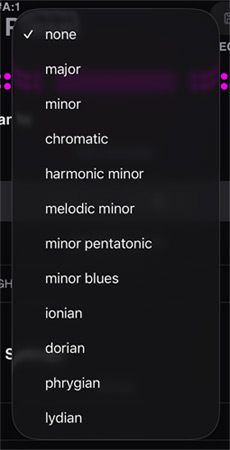
Fixed scales are also possible so that the controller can also be used for tonal playing.
The menu icon (three dots in the upper left corner) gives you access to the presets and the manual (see image above). There are eight banks, each with eight presets. Drumbeam comes with company presets that serve as a foundation.
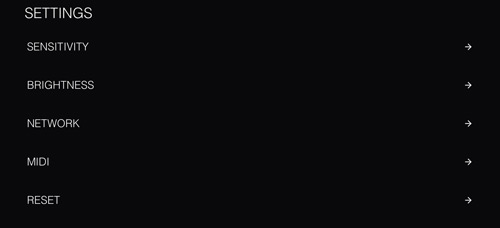
The settings allow you to configure basic settings for a wide range of parameters, such as sensor sensitivity, LED brightness, MIDI, and network.
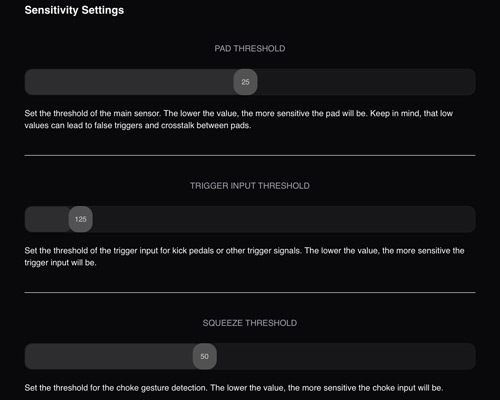
Below follows an example of the page with the sensitivity settings.
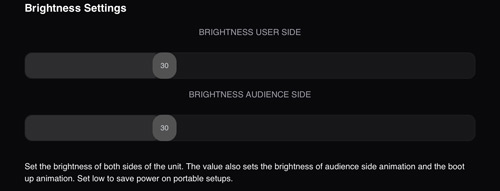
The brightness of the LEDs on the front and back can even be adjusted separately (see image above).
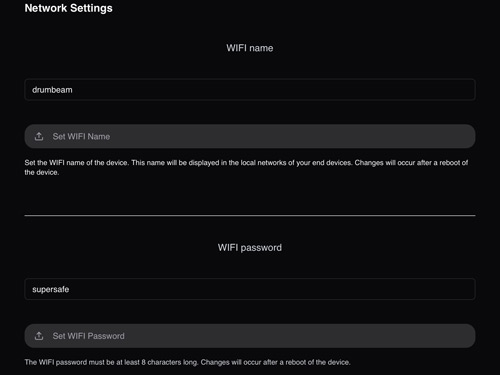
The network name and password can also be customized.
The MIDI settings allow you to change the Drumbeam presets via MIDI program change, and the MIDI Thru function can be customized to suit your needs.
On the preset's start page, the user can select or trigger one of the segments and then change the settings for that segment, such as MIDI CC value, note, note length and channel, segment width, LED colors, velocity range and curve, and CC range and curve. Incidentally, the last screenshot was taken on an iPhone running iOS 26.
Practical use
This raises the question of how well Drumbeam does its job in practical applications and how it compares to classic pads. I myself have extensive experience with Roland Octapad and Nord Drum 3. First of all, it must be said that the web browser interface is more modern than the keypad interface on a pad with double and triple assignments. By eliminating the keys on the controller, it was possible to make its size very compact, and the possibilities and flexibility of the Drumbeam are significantly greater.
I also see a big advantage in the fact that the segments are all next to each other, because when playing melodies on the Drumbeam, this is much more comfortable than using the pads, which are usually arranged in two rows. The silicone has a well-balanced density - not hard and not too soft. There are, or rather were, some pads on the market that had a fairly hard surface. When you hit them, there is a strong rebound, and the stick bounces back strongly. This is not the case with the Drumbeam, which is extremely comfortable and allows for very precise playing. There is a focus area in each segment that is relatively large. Only at the edge of the segments does the response change. You can use a wide variety of sticks without any problems. I've got into the habit of using sticks without tips with Drumbeam, such as the NoTip 5A from Wincent.
The maximum number of segments you use certainly depends on your requirements, and your experience with the controller also plays a role here. A maximum of 18 segments is more theoretical, but 12 segments can be played without any problems with the appropriate practice. The squeeze function takes some time to get used to and is more of a special application for use on a table tripod, for example, to implement a rib controller-like function.
Access via the Wi-Fi access point is practical, but in the studio, I would prefer a direct connection to the existing Wi-Fi network. Upon inquiry, the manufacturer afk audio informed us that they are already working on this. In the future, it should also be possible to send MIDI program changes in order to change the sound of a connected synthesizer. In terms of software, Drumbeam certainly still has a lot of potential.
Conclusion
The regular price of the Drumbeam is 469 euro. The drum case costs around 50 euro and the interlocking USB-C cable around 20 euro. In German-speaking countries, the Drumbeam can be ordered directly from the manufacturer. Distribution networks are being set up in other countries, so please check the manufacturer's website for more information. The craftsmanship is very good, so the price is reasonable.
The Drumbeam is a great MIDI controller. However, MIDI drum controller is the wrong term here, as it would only describe the controller's functionality to a limited extent. Melodic phrases can also be played very well with the Drumbeam, for example, to control a glockenspiel or xylophone-like sounds. Anyone looking for a controller without sound generation for drums and percussion, etc., will find the Drumbeam absolutely perfect, and even those who only use drum pads as MIDI controllers should consider switching. I no longer use a pad at all, as the Drumbeam offers much more possibilities and flexibility as a controller thanks to its design - and is also much easier to use.
 How to resolve AdBlock issue?
How to resolve AdBlock issue? 